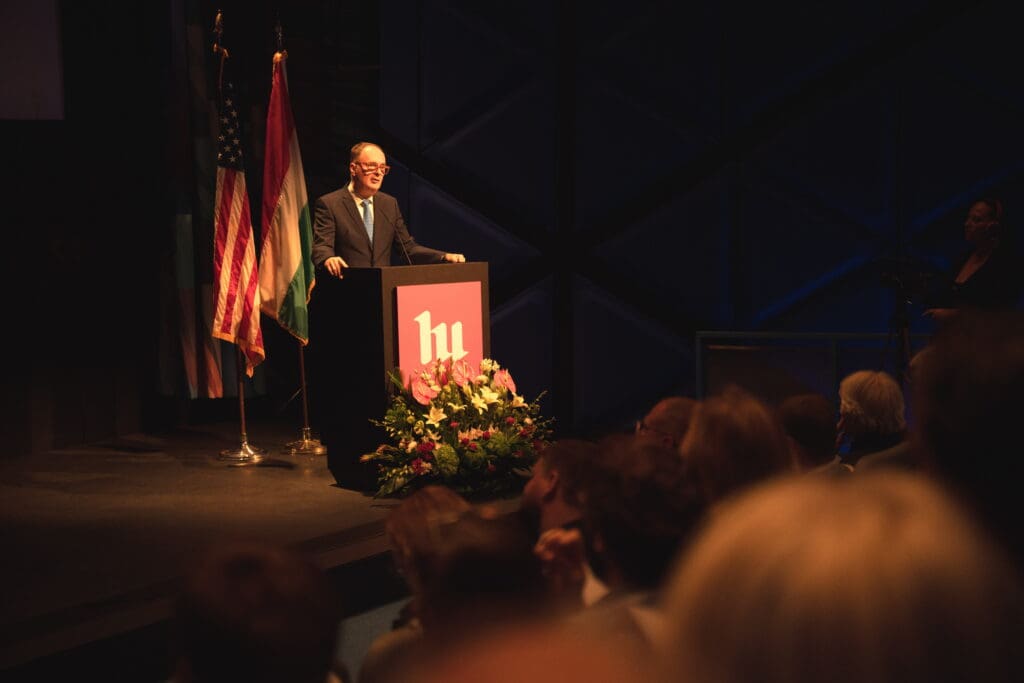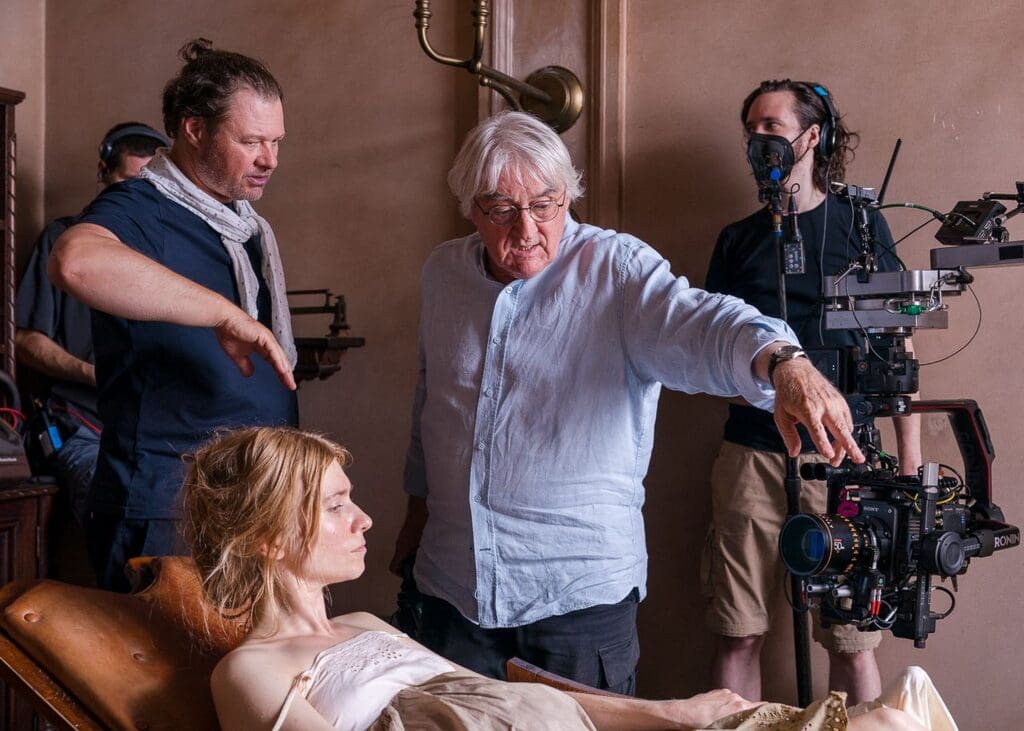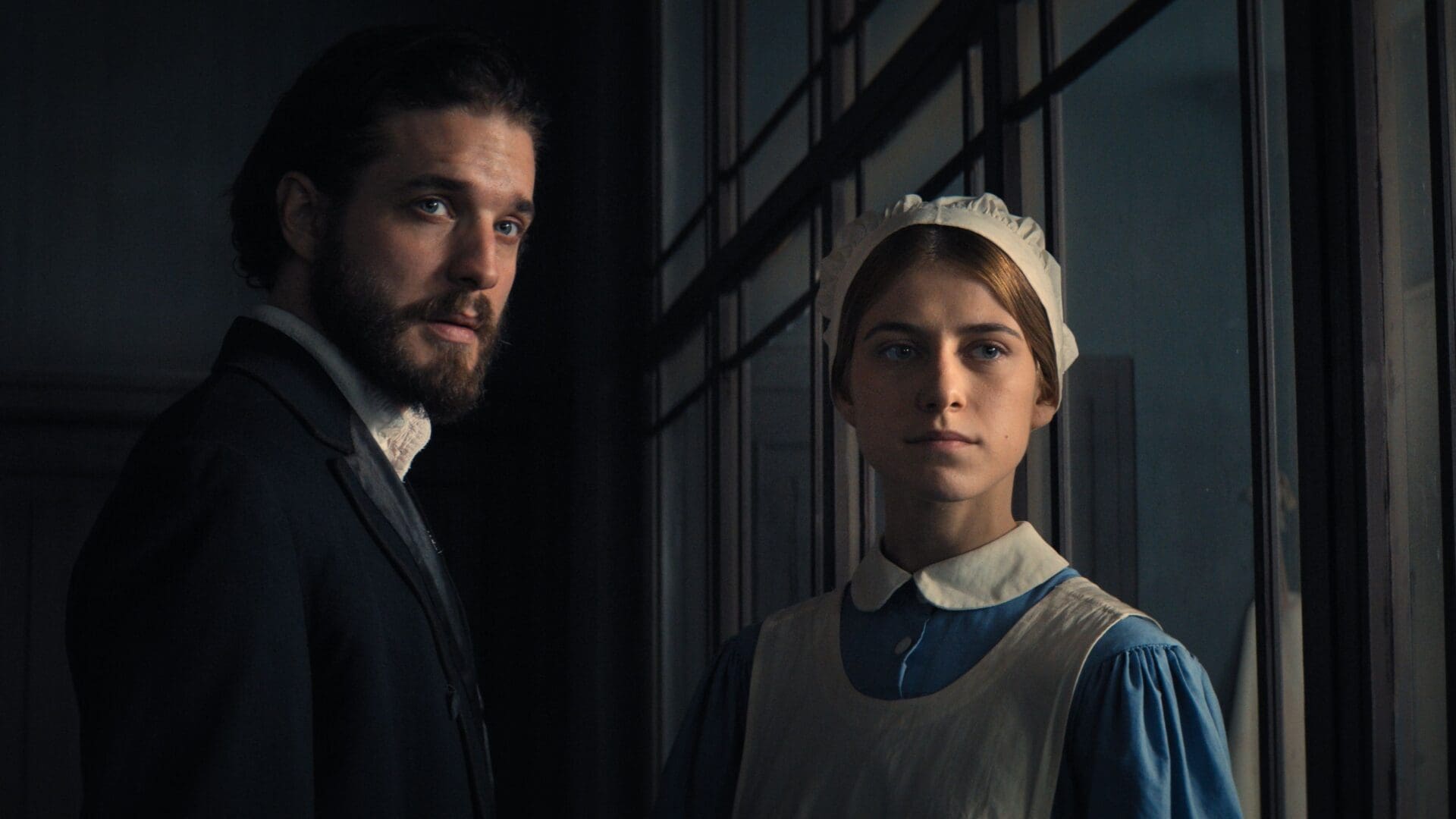On the anniversary of the 1956 revolution and freedom fight of Hungary, the world premiere of the film telling the life of Ignác Semmelweis, a 19th century Hungarian physician and scientist, an early pioneer of antiseptic procedures was held on Monday, 23 October in New York. At the event, organized by the National Film Institute (NFI) and the Liszt Institute in New York, Minister of Culture and Innovation János Csák, Csaba Káel, the government commissioner responsible for the development of the Hungarian film industry and President of the NFI, director Lajos Koltai, producer Tamás Lajos, leading actor Miklós H. Vecsei, and Director of the Liszt Institute Csenge Palotai were all present.

The premiere was attended by ambassadors of more than twenty countries. Special guests of the evening were Courtenay Rattray, Chief of Staff of UN Secretary-General António Guterres and Stewart Simonson, Deputy Director-General of the World Health Organization (WHO).
The romantic period biopic created with the support of the NFI and produced by Szupermodern Filmstúdió explores the life and work of Ignác Semmelweis, a devoted Hungarian physician and scientist, who, defying traditional theories, strove to overcome one of the most devastating diseases of the 19th century, puerperal fever. The film shows him in 1847 and evokes the atmosphere of mid-19th-century Vienna, the life-or-death tragedies of the hospital at the time, the irreconcilable, entrenched conflicts between Austrian and Hungarian doctors, and the agonizing desire for love between a doctor and a nurse, a relationship socially unacceptable in those times.
Before the screening, János Csák explained that Hungarians currently celebrate several heroes: not only the 56ers, but also the famous poet Sándor Petőfi who was born 200 years ago, as well as the the well-known writer Imre Madách, whose main drama, The Tragedy of Man was selected by The Economist as the best ever written parabole on human progress, matching Goethe's Faust, Milton's Paradise Lost and Dante's Divina Commedia. John von Neuman, the Hungarian father of the computer, was also born 120 years ago. ‘Culture in my understanding is not only pictures and music, but our way of life, our way of thinking, therefore it includes art, science and also sports. Talking about science, this year we celebrated two Hungarian Nobel Prize winners, too: one in medicine and one physics,’ the minister stated, who emphasized that Ignác Semmelweis's journey is an example to follow, since—despite the malice and attacks from his Austrian superiors and colleagues—he carried out his vision and became the ‘saviour of mothers’.
He saved the lives of millions of people, just as Nobel laureate Katalin Karikó did, János Csák stressed.
The minister then reminded: ‘100 years later, in Szeged, a city in the south of Hungary, there lived a gentlemen called Albert Szentgyörgyi, who got the Noble prize in 1937 for discovering Vitamin C. I see a direct connection from Semmelweis through Szentgyörgyi to Karikó, who researched in the very same institution where Szentgyörgyi used to work’. Hungary is a small country and nation, we are about ten million within the country’s borders and 15 million around the globe, but we punch above our weight; and what is common in all great Hungarians is that they always work to preserve culture and safe lives. Hungarians are proud of that and this is the reason why the government invests a lot in the education system, Mr Csák concluded his speech.
Csaba Káel first referred to the fact that the Motion Picture Museum, which hosts the premiere, is located next to the legendary Kaufmann Studios, built by Adolf Zukor, founder of Paramount Pictures, who was born and raised in Hungary. He would be very proud if he saw that there is a Hungarian film screening in New York, the commissioner said. ‘Films, music and arts are very much rooted in the Hungarian DNA, as they are in that of the Americans.' Mr Káel recalled that many famous Hungarians became household names in the US, through hard work and artistic talent. The talent, the secret ingredient has an origin in a creative, inventive nation: Hungary.’ In Káél's opinion Budapest, often referred to as a regional cultural metropolis, and New York, ‘its twin city, an undoubtedly true metropolis, share more in common than we may think: both cities are vibrant, dynamic, and are hubs for creativity. In the heart of Europe,
Budapest is shaped by a blend of influences, especially in its architecture which filmmakers from around the globe find irresistible’.

He also emphasized that in recent years, Hungary has hosted landmark productions that have established Budapest as the second biggest film hub in Europe after London. The list of international blockbusters and critically acclaimed films shot in Hungary continues to grow and Hungary has shown itself as a versatile, captivating background for cinematic storytelling, Káel stated. Reflecting on the strategic vision of the NFI, he explained that it is dedicated not only to supporting creative talent of Hungarian films and preserving film heritage, but also to properly investing into a promising future. ‘We are committed in supporting and nurturing local talent and fostering impact for international collaborations. A nation's rich heritage provides filmmakers with a wealth of storytelling and possibilities ready to be turned into screenplays.’

He emphasized that Semmelweis is but one example of these talent stories, an excellent opportunity to present a Hungarian talent worldwide and tell his story; and there is a great deal of international interest in the film, which is further enhanced by the fact that in recent weeks Hungary could celebrate two Hungarian Nobel Prizes. ‘If you think about it,
Semmelweis's discovery was of such importance at his own time that it would have been worth of a Nobel Prize if this recognition had already existed then,’
Csaba Káel concluded his speech.
As Csenge Palotai mentioned, the film was shown on 23 October, a Hungarian national holiday, as it commemorates Ignác Semmelweis's unbroken faith and life of struggle, who was a hero like the Hungarian freedom fighters in 1956. His story is of great importance not only in Hungary, but throughout the world and it is a great opportunity that it can be shown overseas, Lajos Tamás stated. The representative of WHO called the film an important opportunity to bring the figure closer to a wider audience and to explain how fundamental his work was in holistic medicine. As Miklós H. Vecsei previously emphasized, in the case of historical films, it is important that not only the positive character traits of the heroes be illustrated. Semmelweis was not a saint but a fallible human in search for his truth, who believed that his profession was more important than his personal life.
Ignác Semmelweis was the very first doctor who realized that the deadly childbed fever was caused actually by the doctors themselves, who also made autopsies while helping women to deliver their babies in the same institution and were totally unaware of themselves spreading the infection they got from the corpses. In the film version of his life, the doctors, who desperately try to realize what they are doing wrong, have to fight against the leadership of the Austrian hospital, who do everything to protect their authority from the consequences of the discoveries of the ‘obsessed Hungarian doctor’. The Austrian colleagues consider Semmelweis unbearably violent, interested only in the ‘saint cause’ of the health of the mothers'. Dr Kein, the director of the hospital—for whom Semmelweis is the unpleasant, living conscience: if his theory is right, all the doctors were murderers—even tries to set the Hungarian physicians by the ears. He suspends them collectively when they stand up for their colleague who had been suspended because of insisting that before entering the department all doctors should wash their hands with chlorinated water—the only chemical that makes the smell of corpses (and thus infection) disappear.
Although even his Hungarian colleagues do not really understand Semmelweis and consider him crazy (or at least weird, not enjoying the joys of Vienna life, but living only for his work), they at least try to support him by protecting him from the consequences of his hot-tempered behaviour and occasional violations. However, the only one who truly believes in him is a young nurse, Emma Hoffman, who helps him in his devoted work, desperate overnight research, while reciprocating the doctor's tender emotions. However, she is blackmailed by a careerist Austrian doctor who aims to be the next director of the hospital and therefore tries to put mean obstacles in Semmelweis's way even by putting mothers' (and babies') lives in danger. After three weeks of experiments qualified unsuccessful by the leadership, Semmelweis finds himself before a professional court, being accused of several instances of professional misconduct and called a charlatan. However, with Emma's help, the truth finally transpires, his reputation is restored, and he ultimately becomes known as the ‘saviour of mothers’. After the trial, he is even offered the leadership of the obstetrics department in Vienna which he refuses, and moves back to Hungary.
Semmelweis is the story of a professional freedom fight and a socially unacceptable love, beautifully photographed by András Nagy. Miklós H. Vecsei's performance is extremely convincing: he renders the figure of the ‘obsessed Hungarian doctor’ masterfully. The only surprise is the female protagonist, played by Katica Nagy, who wins not only the doctor's but also the viewers' hearts—and not through her beauty, but her braveness and devotion to her profession. Most of the minor characters are played by actors who are ‘big names’ in the Hungarian theatrical scence, such as László Gálffi, Kornél Simon and Nelli Szűcs.
The dramaturge of the film is Krisztina Goda, acclaimed Hungarian screenwriter, dramaturge and director, most well-known for her film dedicated to the 1956 revolution Szabadság, szerelem (Children of Glory). Semmelweis is also being screened today, 27 October, at the Hungarian Film Festival in Los Angeles and will be released in cinemas across Hungary on 30 November, distributed by InterCom.
Related articles:








